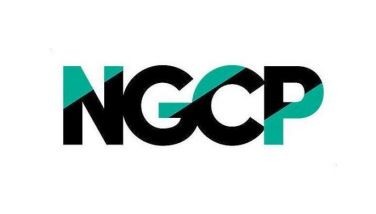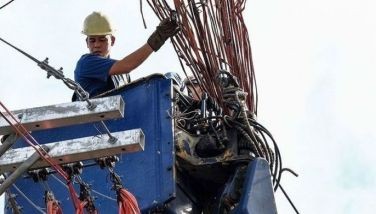NTC seeks policy on rollout scheme
December 30, 2000 | 12:00am
The National Telecommunications Commission (NTC) has asked the Department of Transportation and Communication (DOTC) to come up with a definitive policy on how to deal with the failed service areas scheme (SAS) which required telephone companies to install a certain number of lines in specific areas.
In an interview, Commissioner Joseph Santiago said the NTC first needs to know from the DOTC whether the SAS will indeed be scrapped or not, and what would replace it.
"As soon as we know what the policy is, then we can come up with the guidelines to implement the policy," Santiago said.
Earlier, The STAR reported that the DOTC is looking at the possibility of scrapping the SAS and replacing it with a new program that will require the telcos to put up telecenters in municipalities and public calling offices in barangays.
Despite the absence of a new program, some companies, like Smart Communications, Inc., have taken the initiative to address the huge telephone backlog. The company has earmarked some $15 million for the installation of at least 10,000 wireless payphones in various parts of the country using the global system of mobile communications (GSM) technology which is used in cellular phones.
The DOTC and the NTC are currently reviewing the SAS after many of the telephone companies failed to install lines in so-called missionary or non-profitable areas (phase three). And even in the more profitable areas, the telcos are now burdened with excess capacity.
Government also has to decided how to deal with companies who installed the required number of lines but only a highly profitable (phase one) and less profitable (phase two) areas. It is looking at a system of rewards and penalties for those who were able to install the required number of lines before the 1998 deadline, those who were able to catch up with the requirements only between 1998 and now, a well as those who failed to meet their commitments.
All international gateway facility (IGF) and cellular mobile telephone system (CMTS) providers were required to lay down at least 300,000 and 400,000 lines, respectively. Under the SAS, the country was divided into 11 areas with each of the nine new local exchange carriers (LECs) given specific areas where they can operate.
However, with the sudden boom in cellular phones and the economic crisis, the demand for fixed phone lines has dropped significantly, resulting in poor subscriber take-up.
The SAS was also supposed to be subsidized by revenues earned by telecom from their international operations. However, international toll revenues dropped after the accounting rate was reduced from $1 per minute to only 38 cents a minute. The accounting rate is the amount shared by the local and foreign carrier for each minute of call processed.
This threatened the possibility of international service since at that time, the companies were earning as much as 500 percent per minute," NTC common carrier accreditation department head Edgardo Cabarrios said. This, he said, also threatened the ability of international service to subsidize local services.
In an interview, Commissioner Joseph Santiago said the NTC first needs to know from the DOTC whether the SAS will indeed be scrapped or not, and what would replace it.
"As soon as we know what the policy is, then we can come up with the guidelines to implement the policy," Santiago said.
Earlier, The STAR reported that the DOTC is looking at the possibility of scrapping the SAS and replacing it with a new program that will require the telcos to put up telecenters in municipalities and public calling offices in barangays.
Despite the absence of a new program, some companies, like Smart Communications, Inc., have taken the initiative to address the huge telephone backlog. The company has earmarked some $15 million for the installation of at least 10,000 wireless payphones in various parts of the country using the global system of mobile communications (GSM) technology which is used in cellular phones.
The DOTC and the NTC are currently reviewing the SAS after many of the telephone companies failed to install lines in so-called missionary or non-profitable areas (phase three). And even in the more profitable areas, the telcos are now burdened with excess capacity.
Government also has to decided how to deal with companies who installed the required number of lines but only a highly profitable (phase one) and less profitable (phase two) areas. It is looking at a system of rewards and penalties for those who were able to install the required number of lines before the 1998 deadline, those who were able to catch up with the requirements only between 1998 and now, a well as those who failed to meet their commitments.
All international gateway facility (IGF) and cellular mobile telephone system (CMTS) providers were required to lay down at least 300,000 and 400,000 lines, respectively. Under the SAS, the country was divided into 11 areas with each of the nine new local exchange carriers (LECs) given specific areas where they can operate.
However, with the sudden boom in cellular phones and the economic crisis, the demand for fixed phone lines has dropped significantly, resulting in poor subscriber take-up.
The SAS was also supposed to be subsidized by revenues earned by telecom from their international operations. However, international toll revenues dropped after the accounting rate was reduced from $1 per minute to only 38 cents a minute. The accounting rate is the amount shared by the local and foreign carrier for each minute of call processed.
This threatened the possibility of international service since at that time, the companies were earning as much as 500 percent per minute," NTC common carrier accreditation department head Edgardo Cabarrios said. This, he said, also threatened the ability of international service to subsidize local services.
BrandSpace Articles
<
>
- Latest
- Trending
Trending
Latest
Trending
Latest
Recommended
























